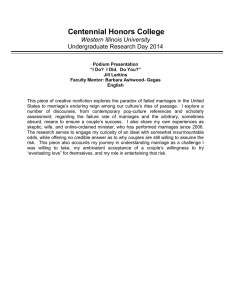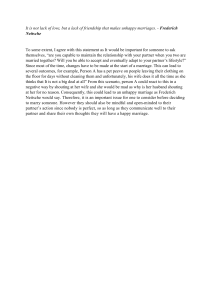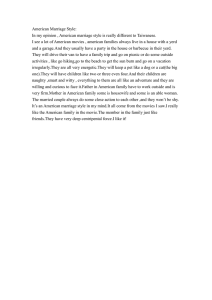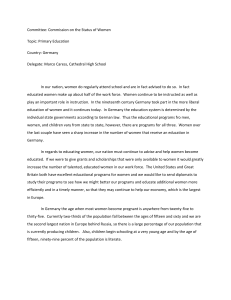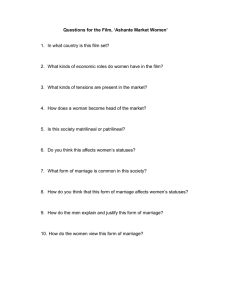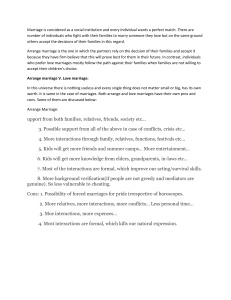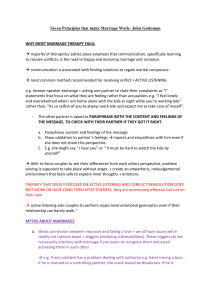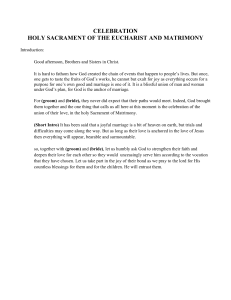What is Marriage For? E.J. Graff
advertisement
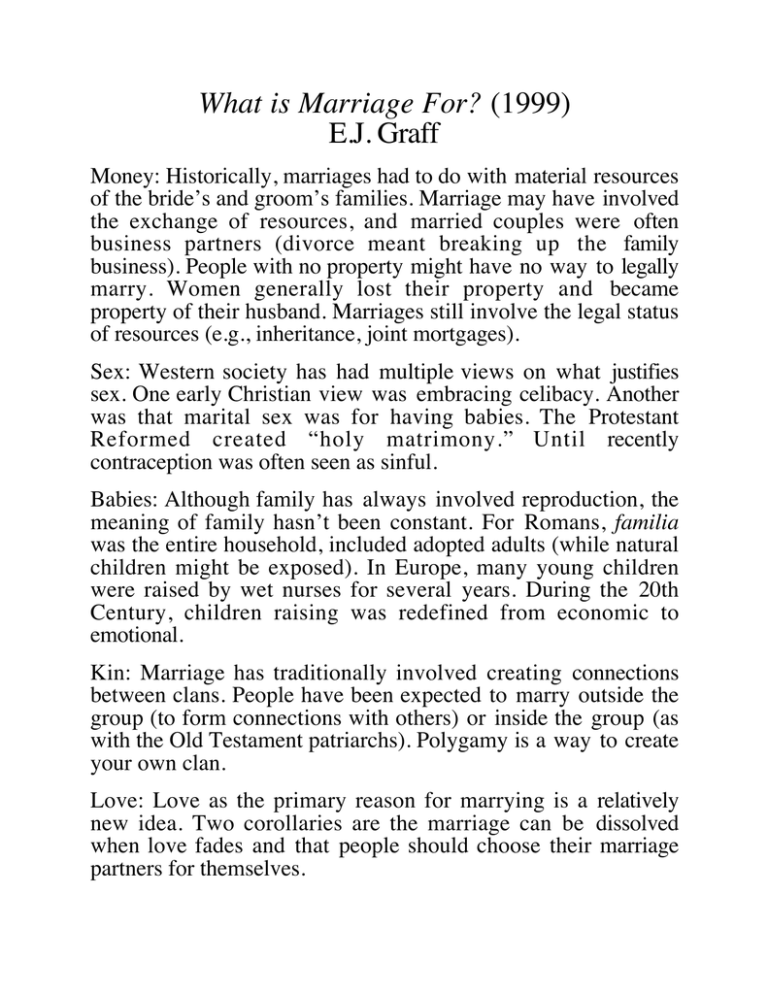
What is Marriage For? (1999) E.J. Graff Money: Historically, marriages had to do with material resources of the bride’s and groom’s families. Marriage may have involved the exchange of resources, and married couples were often business partners (divorce meant breaking up the family business). People with no property might have no way to legally marry. Women generally lost their property and became property of their husband. Marriages still involve the legal status of resources (e.g., inheritance, joint mortgages). Sex: Western society has had multiple views on what justifies sex. One early Christian view was embracing celibacy. Another was that marital sex was for having babies. The Protestant Reformed created “holy matrimony.” Until recently contraception was often seen as sinful. Babies: Although family has always involved reproduction, the meaning of family hasn’t been constant. For Romans, familia was the entire household, included adopted adults (while natural children might be exposed). In Europe, many young children were raised by wet nurses for several years. During the 20th Century, children raising was redefined from economic to emotional. Kin: Marriage has traditionally involved creating connections between clans. People have been expected to marry outside the group (to form connections with others) or inside the group (as with the Old Testament patriarchs). Polygamy is a way to create your own clan. Love: Love as the primary reason for marrying is a relatively new idea. Two corollaries are the marriage can be dissolved when love fades and that people should choose their marriage partners for themselves.

